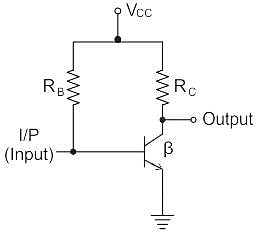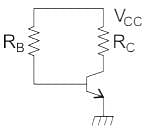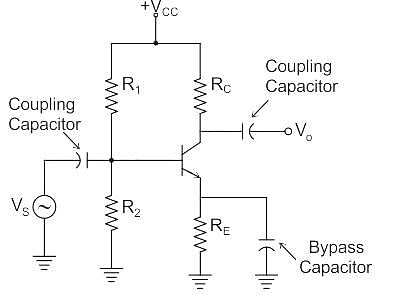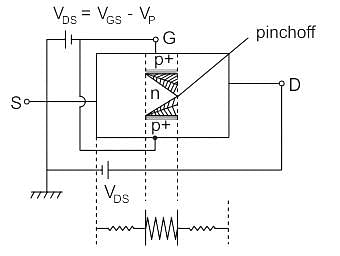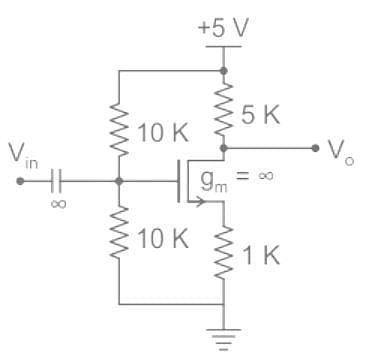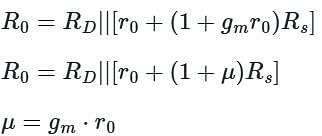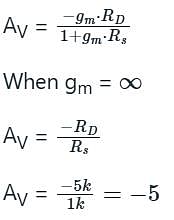Test: FET Biasing - Electrical Engineering (EE) MCQ
15 Questions MCQ Test Analog and Digital Electronics - Test: FET Biasing
| 1 Crore+ students have signed up on EduRev. Have you? Download the App |
Biasing is used in transition amplifiers to
1. Stabilize the operating point against temperature variations.
2. Place the operating point in the linear region of the characteristics.
3. Make α, β and ICO of the transistor independent of temperature variations.
4. Reduce distortion and increase dynamic range.
For a fixed bias circuit the drain current was 1mA, what is the value of source current?
Which of the following equation brings the relation between gate to source voltage and drain current in Self Bias?
Find the gate voltage for voltage divider having R1 = R2 = 1KΩ and VDD = 5V?
Which of the following equations gives the relation between ID and Vgs?
For a fixed bias circuit the drain current was 1mA, VDD = 12V, determine drain resistance required if VDS = 10V?
For a self-bias circuit, find drain to source voltage if VDD = 12V, ID = 1mA, R s= RD = 1KΩ?
Find the gate to source voltage for voltage divider having R1 = R2 = 2KΩ and VDD = 12V, ID = 1mA and RS = 4KΩ?
What is the current flowing through the R1 resistor for voltage divider (R1 = R2 = 1KΩ, VDD = 10V)?
|
137 videos|143 docs|71 tests
|
|
137 videos|143 docs|71 tests
|


